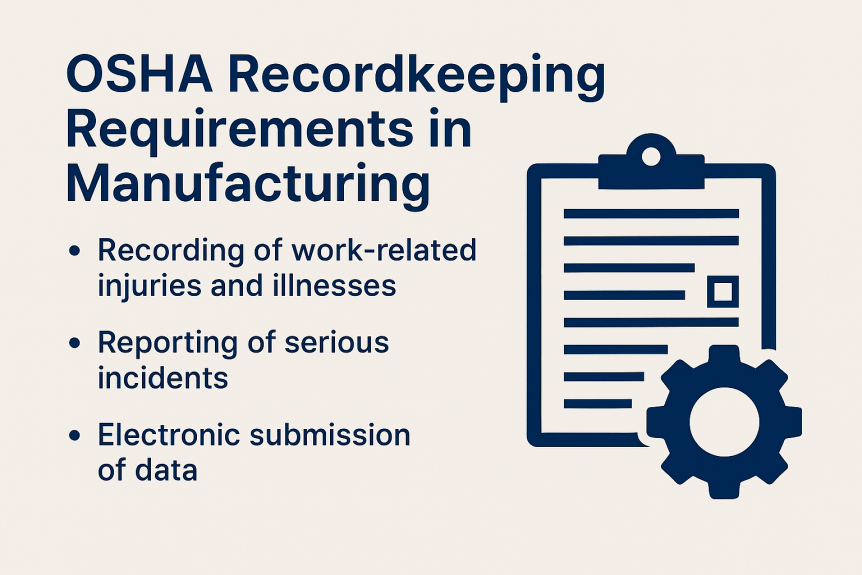In the manufacturing industry, workplace safety is critical—not just for protecting employees, but also for maintaining operational efficiency and regulatory compliance. One of the most important tools for monitoring safety is OSHA recordkeeping. These requirements help manufacturers track workplace injuries and illnesses, identify hazards, and improve safety practices.
Why OSHA Recordkeeping Matters in Manufacturing
OSHA recordkeeping enables manufacturers to analyze safety trends, reduce risks, and comply with federal regulations. Accurate records also support internal safety audits and can help prevent future incidents.
Who Must Comply?
Manufacturing employers with 10 or more employees are generally required to maintain OSHA injury and illness records. However, some small businesses or low-risk operations may be exempt. To determine your status, check your NAICS code and OSHA’s list of partially exempt industries.
Key OSHA Recordkeeping Forms for Manufacturing
To comply with OSHA recordkeeping requirements, manufacturers must use:
- OSHA Form 300 – Log of Work-Related Injuries and Illnesses
- OSHA Form 300A – Annual Summary of Work-Related Injuries and Illnesses
- OSHA Form 301 – Individual Incident Report
These forms must be retained for five years and made available to OSHA and employees upon request.
OSHA Reporting Requirements for Manufacturing Incidents
All employers, including those in manufacturing, must report the following incidents directly to OSHA:
- Fatalities – Within 8 hours
- Hospitalizations, amputations, or loss of an eye – Within 24 hours
Electronic Submission Requirements
Manufacturing establishments that meet OSHA’s criteria must submit injury and illness data electronically via the Injury Tracking Application (ITA) between January 2 and March 2 each year.
Best Practices for OSHA Recordkeeping in Manufacturing
- Train supervisors and safety teams on what qualifies as a recordable incident
- Conduct regular audits of OSHA Form 300 logs
- Post OSHA Form 300A from February 1 to April 30 annually
- Use digital tools to streamline recordkeeping and ensure accuracy
Final Thoughts
Understanding and complying with OSHA recordkeeping requirements in manufacturing is essential for maintaining a safe and legally compliant workplace. By keeping accurate records, manufacturers can protect their workforce, reduce liability, and foster a culture of safety. Use an OSHA record keeping software to streamline compliance, save time, and reduce the risk of costly reporting mistakes.

